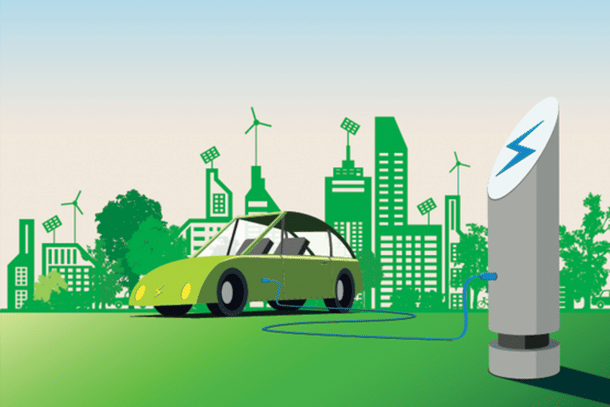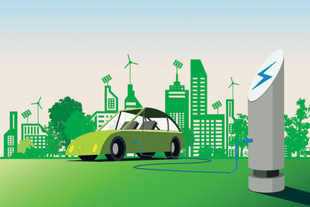News Brief
Government Mulls Rs 26,400 Crore Allocation For FAME III Scheme To Accelerate EV Adoption: Report
Kuldeep Negi
Jan 04, 2024, 03:54 PM | Updated 03:54 PM IST
Save & read from anywhere!
Bookmark stories for easy access on any device or the Swarajya app.


The Ministry of Heavy Industries is currently working on the third phase of the Faster Adoption and Manufacturing of Electric Vehicles (FAME-III) programme.
After consulting with stakeholders, the ministry reportedly plans to allocate Rs 26,400 crore to the FAME-III subsidy, with Rs 8,158 crore for electric two-wheelers, Rs 9,600 crore for electric buses, Rs 4,100 crore for electric three-wheelers, Business Standard reported citing sources in the know.
With additional components such as the establishment of an innovation fund and funds for testing, the total allocation could exceed Rs 33,000 crore, as per estimates.
Ongoing discussions are currently underway regarding the fundamental framework of the proposed scheme.
The primary objective of this scheme will be to enhance electric-based and eco-friendly public transportation within the nation.
The plan also includes provisions to back e-tractors with a fund of over Rs 200 crore.
There is a possibility of including hybrid vehicles and hydrogen fuel cell vehicles, though initially, they may only receive a nominal allocation of Rs 100 crore.
Furthermore, around Rs 1,800 crore is set to be allocated for electric four-wheelers.
After FAME-I and FAME-II, there were reports that the finance ministry had raised doubts about the necessity of prolonging the subsidy scheme.
Despite this, the Ministry of Heavy Industries has been advocating for its extension, emphasising the importance of electric and alternate fuel vehicles.
The proposed budget for the third phase is significantly larger than that of FAME-I and FAME-II, with allocations of Rs 895 crore and Rs 10,000 crore, respectively.
The proposal currently being considered for electric two-wheelers suggests maintaining the subsidy for four years in a decreasing manner: The first year would see a subsidy of Rs 15,000 per KWH of battery, which would then reduce to Rs 7,500 in the second year, Rs 3,000 in the third year, and finally, Rs 1,500 in the scheme's last year.
It is expected that by the fifth year, the cumulative sales of electric two-wheelers will reach 10.5 million.
The highest subsidy per vehicle will be limited to Rs 15,000 in the initial two years, which will subsequently decrease to Rs 6,000 in the third year and further drop to Rs 3,000 in the fourth year.
The subsidy per KwH battery for electric four-wheelers, like cabs, will be provided on a diminishing scale - starting at Rs 10,000 in the first year, then decreasing to Rs 8,000, Rs 5,000, and finally Rs 3,500 in the following years.
The highest subsidy per vehicle will initially be set at Rs 1.5 lakh in the first year, decreasing to Rs 65,000 by the fourth year.
A comparable diminishing subsidy model is being suggested for e-three wheelers as well, where the subsidy would decrease from Rs 15,000 in the initial year to merely Rs 5,000 per KWH of battery by the fourth year.
Simultaneously, the maximum subsidy limit per vehicle would also reduce from Rs 100,000 in the first year to Rs 50,000 by the fourth year.
For electric buses, models based on capex subsidy and viability gap funding (VGF) like the PM e-bus Sewa scheme are being considered. A total of 36,700 e-buses will be supported under the scheme.
The policy is also considering offering an extra incentive of 10 per cent for all electric vehicles registered by women across all segments.
The government is also considering an extension of the standard operating procedures (SOPs) under the automobile Production-Linked Incentive (PLI) scheme for electric vehicles, due to the negative impact on the development of electric vehicles (EVs), particularly electric two-wheelers, caused by alleged violations of the phased manufacturing programme (PMP) norms.
The prerequisites such as bank guarantee, integrity pledge, and penal provisions, currently included in the PLI auto scheme, could potentially be applied to the disbursements of the FAME III subsidy.
MHI is also in discussions about establishing an Innovation Fund worth Rs 1,000 crore.
The fund could be utilized for initiating pilot projects for public transportation, including hydrogen-powered buses. An expert advisory panel could be formed under the auspices of MHI to manage this fund.
The fund has the potential to cover as much as 80 per cent of the project cost, with the industry providing the remaining portion.
MHI's estimates suggest that an additional Rs 3,000 crore will be required for test centre upgradation fund apart from a public outreach and administration scheme.
Kuldeep is Senior Editor (Newsroom) at Swarajya. He tweets at @kaydnegi.





